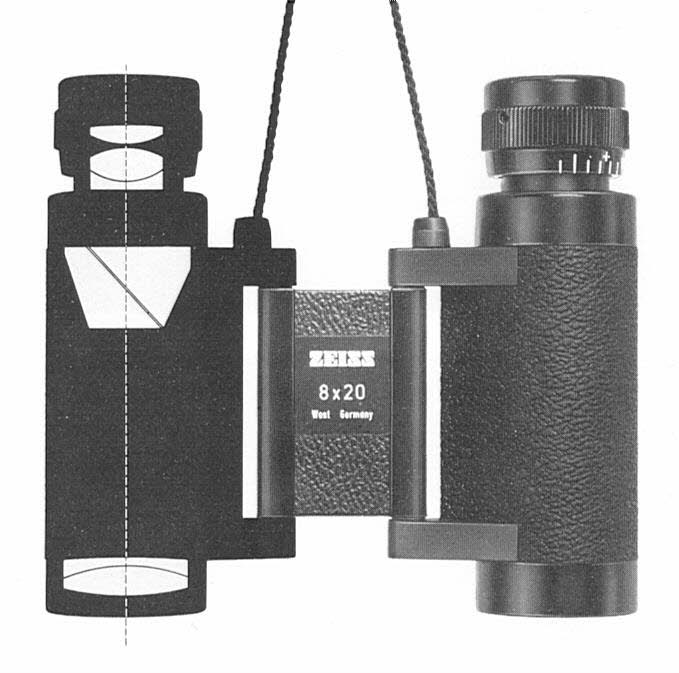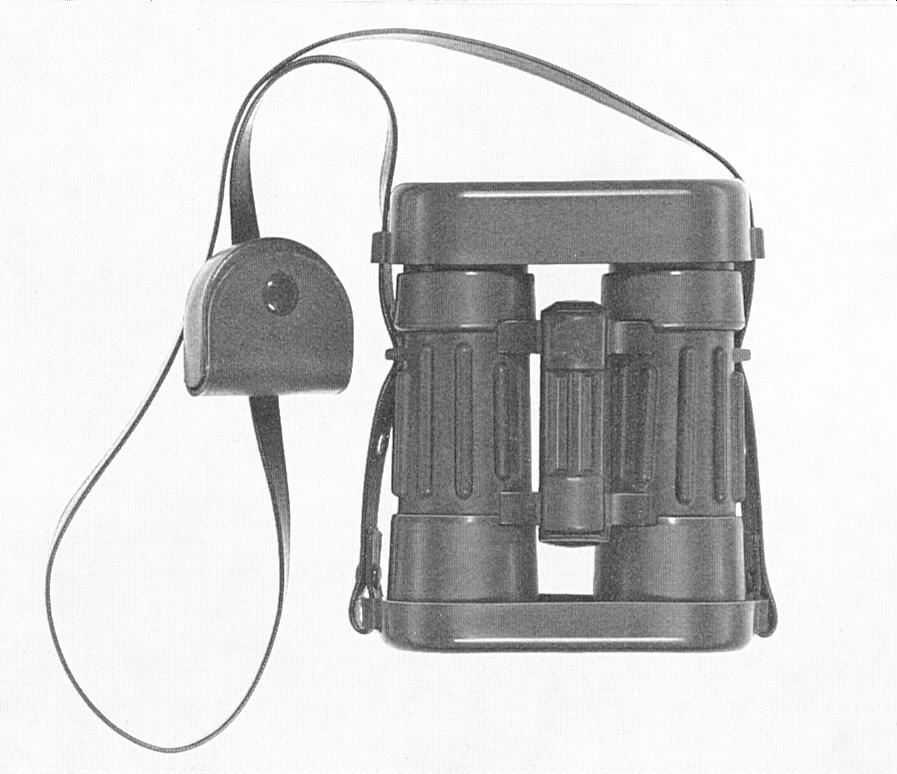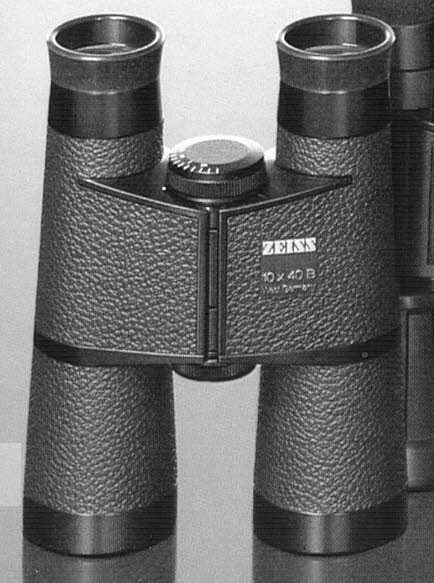After insiders and professionals organized more and more into associations, and scientific ornithology got more importance at the end of the 19th and the beginning of the 20th century, there was a kind of switch after the two world wars. It was about bringing the fascination of nature observation out to everybody. After the terrible political experiences people looked for more harmless and peaceful experiences. A number of zoologists in different countries discovered the potential of film showing nature in all its facets to a broad audience.

Binocular 8×20 with Z-folding, Oberkochen, 1969
Significant for this development was the progression in the camera and optical techniques. In 1954 the first binoculars were produced by ZEISS, now in the west in Oberkochen, which allowed a more compact design with teleobjective lenses. In 1964 ZEISS launched the first Dialyt with roof prisms, which meant a new dimension of image quality, enabled observation in dawn and meant an even better and more compact design. In 1969 the first high-quality pocket binoculars followed, which became interesting for those, who wanted to observe on walks in their spare time and were not so fond of the bigger binoculars of the professional observer’s.
In Germany, Heinz Sielmann explained nature to the general public on a regular basis. As a child he observed mainly birds. While a time in England the zoologist and biologist was able to work for BBC and learn the important tools for film-making. His close contact to the Austrian behavioral scientist and zoologist Konrad Lorenz helped him in the research on his expeditions. With the zoologist and long-time director of the zoo in Frankfurt am Main, Bernhard Grzimek, he worked on several documentaries. Grzimek’s motion picture film “Serengeti must not die“ of 1959 was the first German movie ever to win an Oscar.
In UK the BBC Natural History Unit was one of the internationally most successful and professional documentaries transporting the fascination of nature to the general public since 1957 and especially in the 60s and 70s. BBC annually produces 100 hours of nature documentaries and 50 hours of radio programs. It is most well-known representative was and still is Sir David Frederick Attenborough, who regularly raises his voice for nature conservation. In the beginning his focus was on the wonders of nature, but he focused more and more on biodiversity, a changing consumer behavior and environmental protection.
The BBC documentaries gained high popularity also in the USA. There, nature associations were very successful winning people for direct nature observations on nature tours. With Robert J. Flaherty’s “Nanook of the North” about Namibia’s nature from 1922 the tradition of nature documentaries had started quite early. A totally different approach started there in the 1940s. Walt Disney, today mainly known for the financially successful films, had the vision of giving pupils an understanding of animals’ lives. He used a kind of humanization as an instrument to get the kid’s attention and let animals speak in his animated films. Decisive for him was that the animals behaved like their real species. He organized a travel to the New York Zoological Society for his people to study a realistic simulation. Between 1948 and 1960 Walt Disney Production also released the “True-life adventures” with popular real nature documentaries.
From today’s perspective with a wider variety of channels and better optics some of the nature documentaries of the post-war period may seem unusual. However, they were significant to make nature and its effects on humans popular.

Binoculars 8×30 B/GA DYALYT with single eyepiece adjustment, especially for field use in surveying practice under difficult conditions, Oberkochen, 1968 
Binocular 10×40 B T* Dialyt, Oberkochen, 1983
© ZEISS Archive